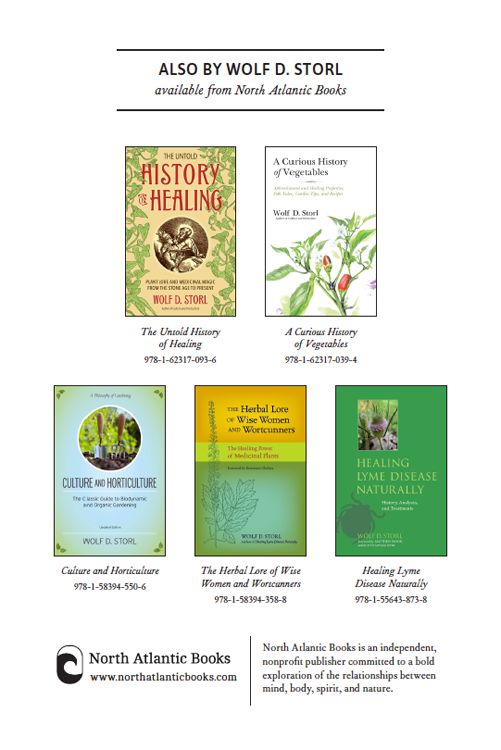About the Author

Born in 1942 in Saxony, Germany, with a green thumb and the gift of writing, cultural anthropologist and ethnobotanist Wolf Dieter Storl, who immigrated with his parents to the United States in 1954, has had a special connection to nature since childhood. His specific area of research is shamanism and healing in traditional societies, focusing on the role of plants in all aspects of life, including sacred symbolism, magic, medicine, foods, and poisons. He has pursued this interest in many parts of the world. After finishing his PhD in anthropology on a Fulbright scholarship in 1974 in Berne, Switzerland, he taught anthropology and sociology in Grants Pass, Oregon.
Storl is also an avid traveler and has observed nature around the entire globe, spending time with people who are very connected to the nature that surrounds them. From 1982 to 1983, he spent a year as an official visiting scholar at the Benares Hindu University in Varanasi, India. After returning to the United States in 1984, he spent two years with traditional medicine persons of the Cheyenne and taught courses at Sheridan College in Sheridan, Wyoming. He has traveled and conducted research in South Asia, India, Mexico, the Canary Islands, South Africa, and much of Europe, pursuing ethnobotanical and ethnomedicinal interests. His books and articles have been translated into various languages, including Czech, Danish, Dutch, English, French, Italian, Japanese, Latvian, Polish, Portuguese, Spanish, and Russian. Storl is a frequent guest on German, Swiss, and Austrian television and has also appeared on the BBC. After another visit in India and Nepal in 1986, Storl and his wife moved to Germany, where he is writes and lectures. They live on an old estate with a large garden in the foothills of the Alps.
Storl’s books are unique in that he does not treat nature with cold objectivism. He is able to delve into nature’s depths and supports his experience with ancient lore from all over the world that has been, for the most part, left on the wayside in the wake of objective science. He theorizes that science is not always as objective as it claims to be and invites his readers on a journey into a world of nature that is completely alive and has its own rhyme and reason. Myths and lore from many cultures also have a prominent place in his writings, as he claims that the images portrayed in this way often tell us more about the true nature of things than dry, scientific facts can do.
